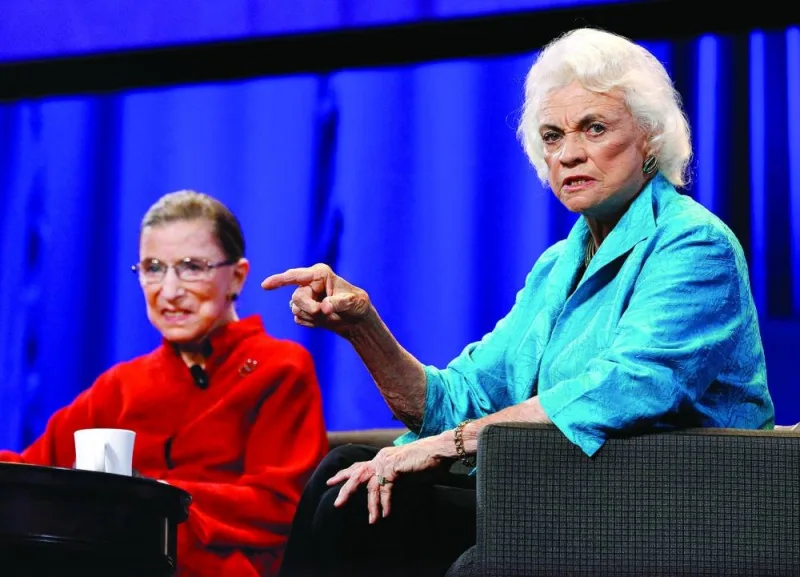Retired US Supreme Court justice Sandra Day O’Connor, the first woman appointed to the nation’s highest court and a noted pragmatist in an age of deep division, died yesterday. She was 93.
O’Connor died at her home in Phoenix, Arizona, of complications related to advanced dementia and a respiratory illness, the court said in a statement.
“A daughter of the American Southwest, Sandra Day O’Connor blazed an historic trail as our nation’s first female justice,” Chief Justice John Roberts said.
“She met that challenge with undaunted determination, indisputable ability and engaging candour,” Roberts said. “We celebrate her enduring legacy as a true public servant and patriot.”
O’Connor was appointed to the Supreme Court by Republican president Ronald Reagan in 1981 and confirmed in a 99-0 vote.
She served as one of the nine justices on the court until 2006, when she stepped down in part to care for her ailing husband.
Ruth Bader Ginsburg, a liberal, was the second woman nominated to the court – in 1993 – and there have been four other women justices since then, all of whom are currently serving on the bench.
O’Connor wielded enormous influence as the key centrist on a sharply divided court, where she often displayed a preference for pragmatism over ideology.
She frequently emerged as a crucial swing vote, breaking with her conservative colleagues and providing the fifth vote to make a liberal majority on several key occasions.
O’Connor notably sided with the majority that blocked the 2000 Florida presidential election recount and effectively handed the White House to George W Bush.
She later expressed regret about the ruling, telling the Chicago Tribune in 2013 that the court did not need to get involved.
She outraged conservatives a few years later by helping to uphold the University of Michigan Law School’s right to run an affirmative action admissions policy.
O’Connor proved the decisive vote on key cases that upheld the government’s neutrality towards religion, including a 2005 ruling that it was unconstitutional for the Ten Commandments to be displayed in several courthouses.
Sandra Day was born on March 26, 1930, in El Paso, Texas and grew up on a cattle ranch in southeastern Arizona.
A legal dispute over the family ranch stirred her interest in law and O’Connor enrolled at prestigious Stanford Law School, where she briefly dated William Rehnquist, a classmate with whom she would eventually serve on the Supreme Court for more than two decades.
She ultimately married another fellow student, John Jay O’Connor, in 1952. He died in 2009.
Following a five-year break from work when she started a family, she served as an Arizona assistant attorney-general from 1965 to 1969, when she was appointed to a vacancy in the Arizona state senate.
In 1974, O’Connor ran successfully for trial judge, a position she held until her appointment to the Arizona Court of Appeals in 1979.
Eighteen months later, Reagan nominated her to the Supreme Court.
O’Connor described her tenure as similar to walking on wet cement “because every opinion you offer, you’ve left a footprint”.
With her ranch-bred work ethic and plain-spoken way, O’Connor’s mantra was “be constructive”.
Upon leaving the court, in part due to her husband’s battle with Alzheimer’s, O’Connor committed her remaining years to civic engagement.
She founded iCivics in 2009 to teach middle and high school students about civics via online games and other remote learning tools. It reaches millions of students a year, according to its website.
She was the author of five books including one about her childhood and another about her experiences on the court – The Majesty of the Law: Reflections of a Supreme Court Justice.
In 2018, O’Connor announced that she had been diagnosed with the beginning stages of dementia and was stepping away from public life.
O’Connor is survived by her three sons and six grandchildren.

This picture from 2010 shows former associate justice Sandra Day O'Connor (right) with then-Associate Justice Ruth Bader Ginsburg during the lunch session of 'The Women's Conference 2010' in Long Beach, California.
